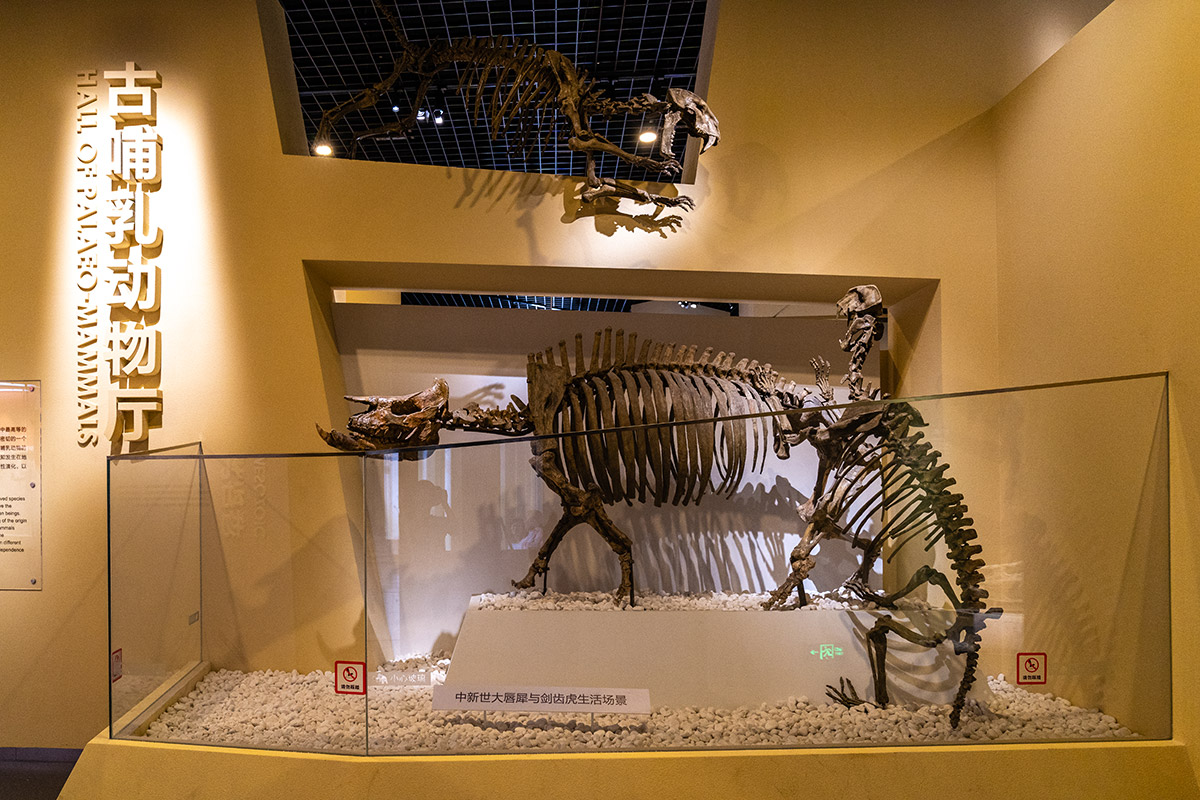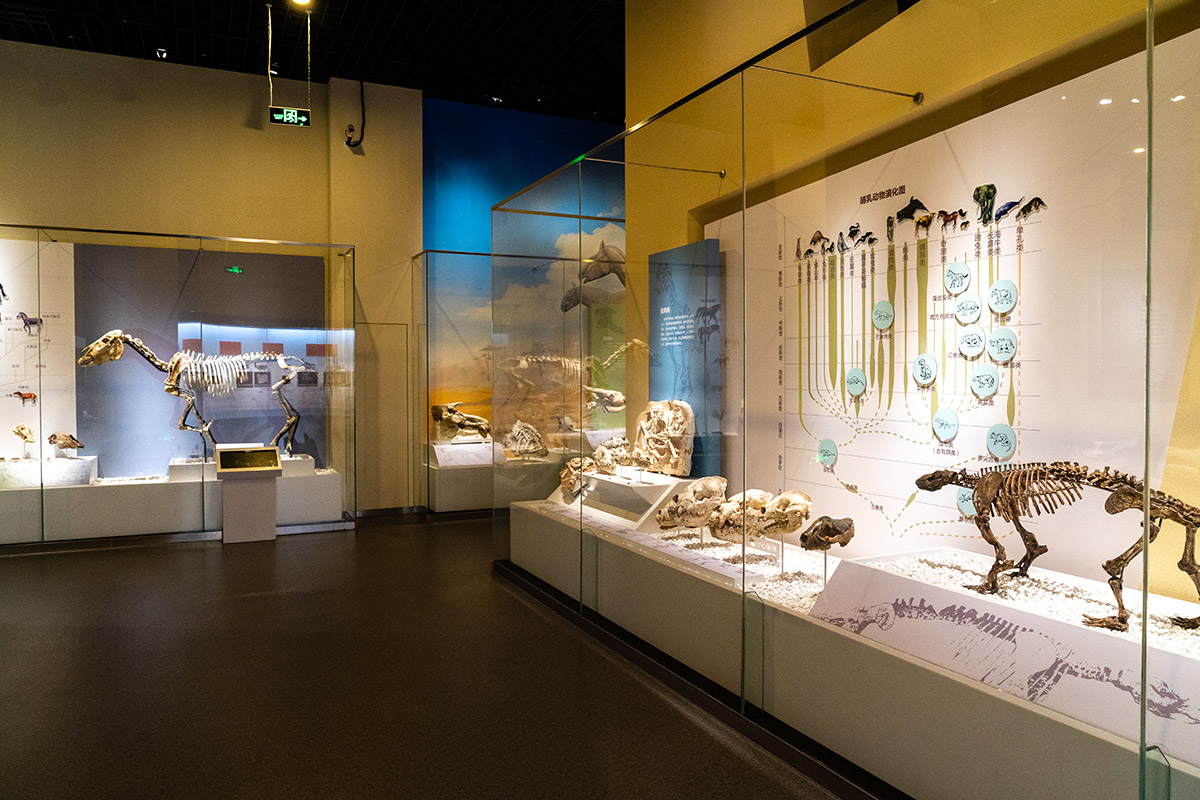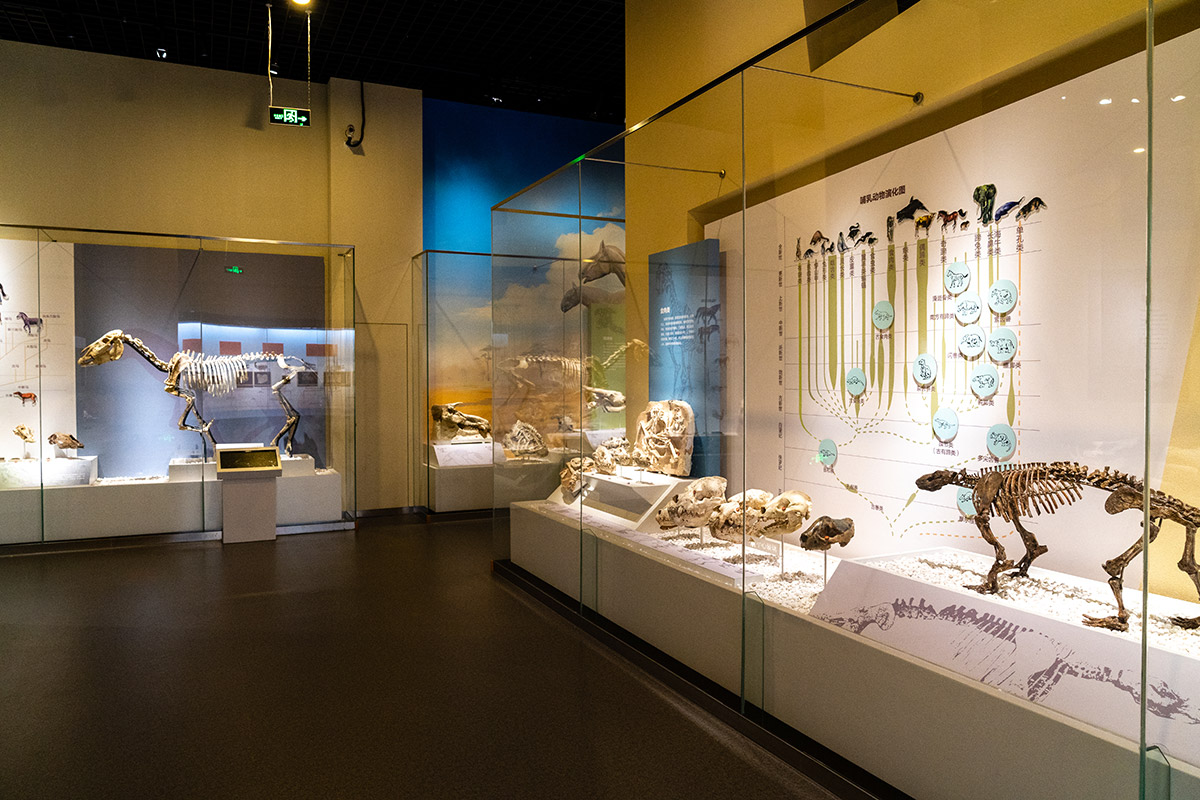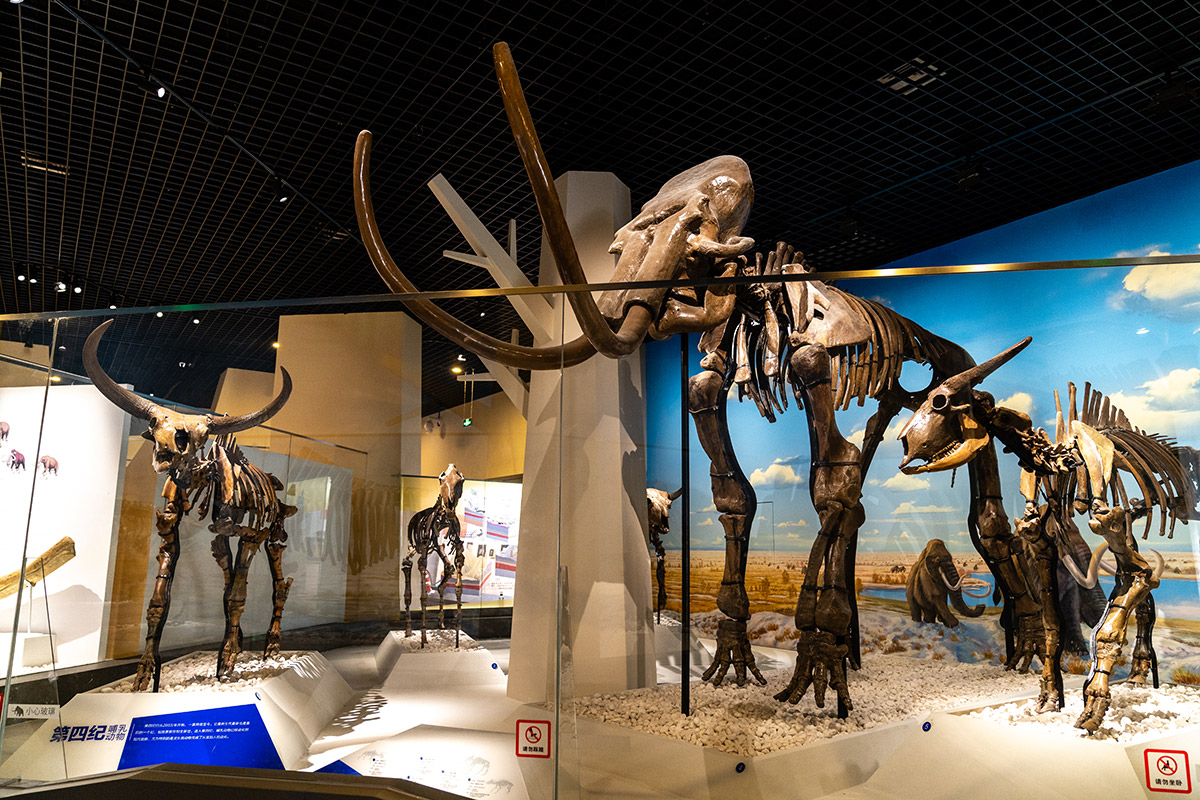Position:Home > Exhibition> Prehistoric Mammals
Exhibition
Prehistoric Mammals
The impressive Prehistoric Mammals exhibition reopened on July 6th, 2019 in Beijing Museum of Natural History, after year-long preparation and renovation.

The gallery of Prehistoric Mammals adopts a beige tone as its overall color scheme, the color of the surrounding rocks of mammal fossils.
At the entrance of the exhibition, the signature skeleton exhibit is displayed. Two Cenozoic era representative saber-toothed cats are preying on a Chilotherium specimen, which visualizes the typical scenario of prehistoric mammals.
The exhibition is designed with meandering paths around exhibits leading to an open scene, and arranged in the evolutionary order. Based on the fossil evidence of the Mesozoic era, the exhibition recreates nine models of small-sized mammals by 3D printing. With the sliding-screen interactive and multimedia exhibits, the flat type specimens are visually represented, bringing deeper understanding of the era and a better visiting experience to the visitors.

The exhibition floor plan is divided into different zones with distinctive contents. The small-sized specimens are displayed in niches, cabinets and closets. The large-sized skeleton of a woolly mammoth, a bison, and a woolly rhinoceros from the Quaternary period are mounted in separate open dioramas. The vivid background pictures in those landscapes depict the prehistoric habitats, creating an immersive experience for the visitors.

Prehistoric Mammals occupies a display area of 480 square meters. After renovation, the fossils on display have increased to include most of the representative prehistoric mammals. The first part of the exhibition shows the evolution of Mesozoic mammals, the second part sheds light on the development and prosperity of the Cenozoic mammals, the third part focuses on Quaternary mammals, and the last part displays the evolution of primates, highlighting the specimens of Pliopithecus zhanxiangi. Featured specimens include Juramaia sinensis, Vilevolodon, Bemalambda, Machairodus, Dinocrocuta gigantean, Hipparion, Stegodon zdanskyi, woolly mammoth, Paraceratherium and Hezhengia. Among others, the reconstruction and bone specimen of the largest mammalian Bemalambdidae, which emerged after the extinction of dinosaurs, fossils of Stegodon zdanskyi (four meters high and eight meters long) and Platybelodon are still exhibits in the spotlight, just like before the renovation.

In addition to the precious specimen collection, the exhibition introduces the characteristics of the Mesozoic mammals, the comparison of mammals and reptiles, the Mesozoic mammals diversity in detail covering Haramiyida, Docodontidae, Symmetrodonta, Eutriconodonta, Multituberculata, Prototheria and its relatives, Metatherians, Eutheria, etc. Furthermore, the exhibition shows scientific research updates on ancient mammals in the last ten to twenty years.
Mammals are the highest form of vertebrates and the closest group to humans. Studying the origin and development of the prehistoric mammals will clarify the diverse evolution of mammals throughout the geological history, and conceptualize the interconnection between mammals and the Earth. Only by ceaselessly exploring the expansion and evolution of mammals and investigating the role and function of mammals in the biosphere can we sustainably conserve and utilize the animal resources and develop harmoniously with them.

Want to know more about ancient mammals? Come and visit Beijing Museum of Natural History. A wonderful journey starts here.